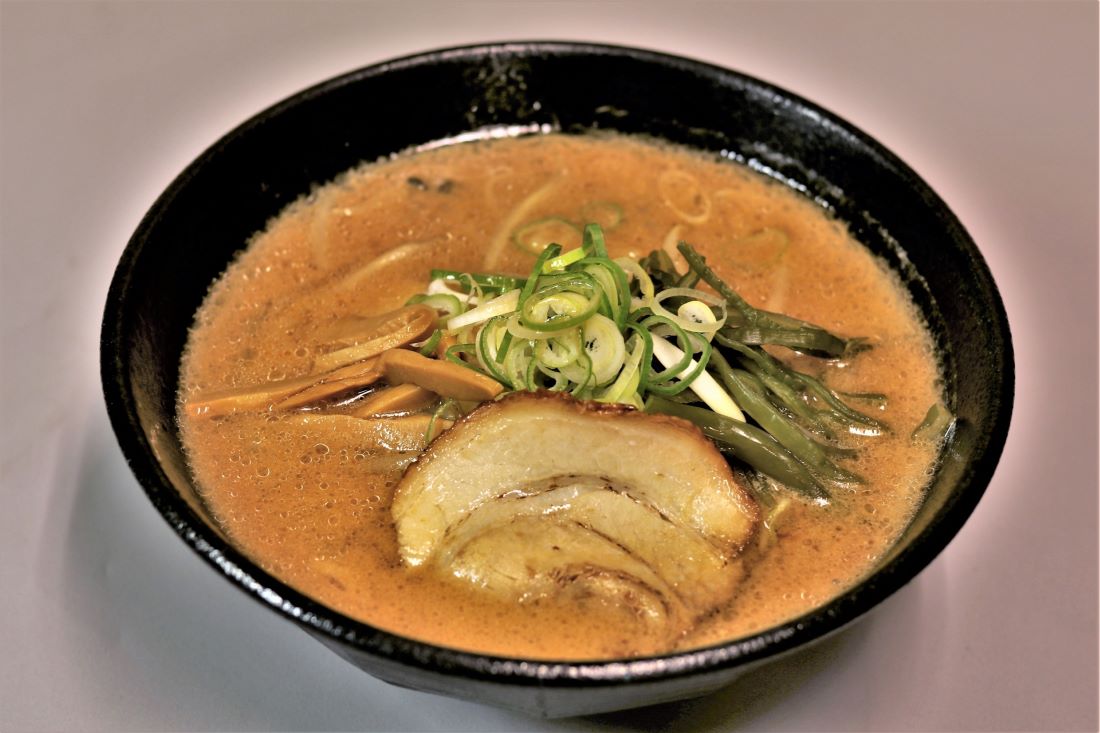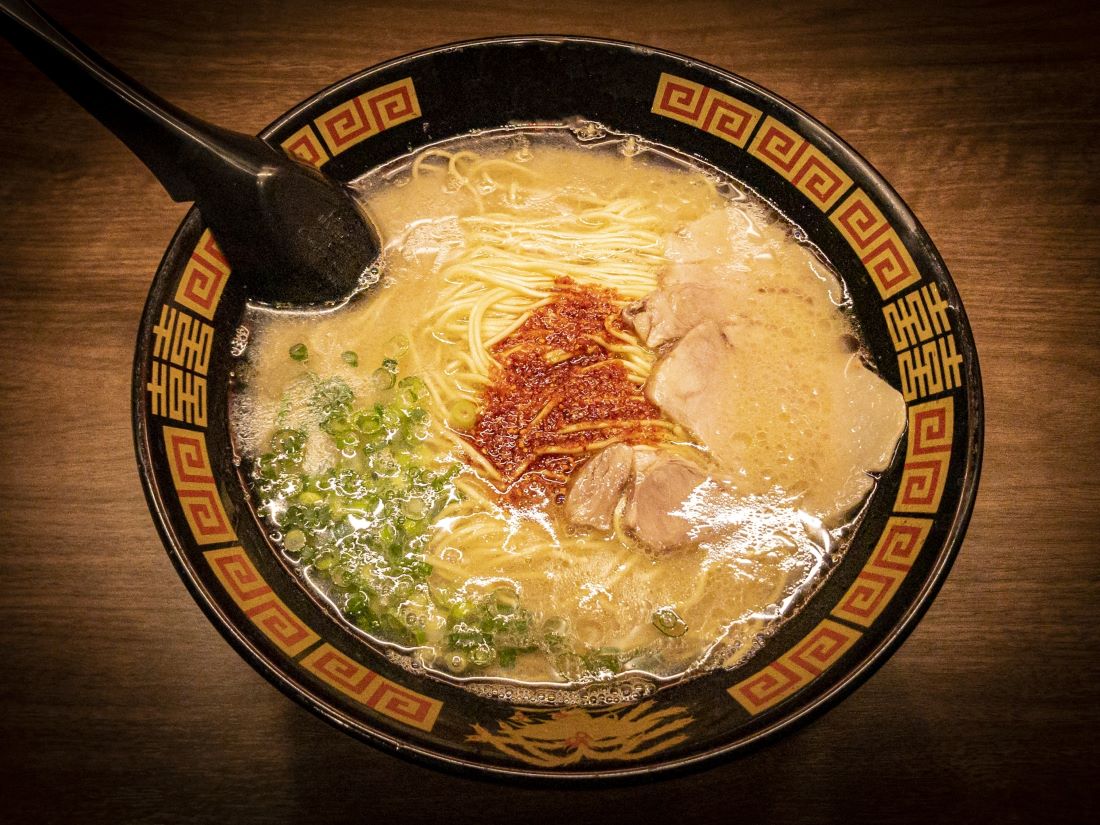Ramen is a popular Japanese dish that has gained worldwide popularity over the years. It consists of Chinese-style wheat noodles served in a meat or fish-based broth, often flavored with soy sauce or miso, and topped with ingredients such as sliced pork, dried seaweed, or green onions. Ramen has become a staple in many countries and can be found in various forms, from instant ramen packets to high-end gourmet bowls served in restaurants.

The origins of ramen can be traced back to China, where it was originally known as “la mian,” meaning “hand-pulled noodles.” It was later introduced to Japan in the late 19th century and has since become a beloved dish in Japanese cuisine. Ramen has evolved over time, with different regions in Japan developing their own unique styles and flavors, such as the rich and creamy tonkotsu ramen from Fukuoka and the spicy miso ramen from Sapporo.
Key Takeaways:
- Popular Japanese dish consisting of Chinese-style wheat noodles served in a meat or fish-based broth.
- Originated in China and was later introduced to Japan in the late 19th century.
- Styles include tonkotsu, shio, shoyu and miso ramen.
- Comon toppings include sliced pork, dried seaweed, and green onions.
- Instant ramen, which was invented in the 1950s, has become a popular convenience food around the world.
History of Ramen

Ramen is a popular Japanese dish that has become a favorite around the world. Its origins, however, are traced back to Yokohama Chinatown in the early 20th century. The word “ramen” is a Japanese borrowing of the Mandarin Chinese word “lāmiàn,” which means “pulled noodles.”
While some claim that ramen is an entirely Japanese invention, the generally agreed-upon consensus is that ramen evolved from Chinese wheat noodles. The first Chinese noodles served in Japan were known as “shina soba,” which is an archaic Japanese word for Chinese noodles. Ramen as we know it today, however, is distinctively Japanese, with its own unique flavors and styles.
The popularity of ramen in Japan began to grow after World War II, when food shortages forced people to look for inexpensive and filling meals. Street vendors and small restaurants began serving ramen, and it quickly became a staple of Japanese cuisine.
Today, ramen has become a global sensation, with restaurants dedicated solely to the dish popping up in cities around the world. Its popularity and versatility have led to countless variations, from traditional tonkotsu and miso broths to vegetarian and even dessert ramen.
Despite its widespread popularity, ramen remains a dish deeply rooted in Japanese culture and history. It continues to evolve and adapt to new tastes and trends, while remaining a beloved comfort food for millions around the world.
Types of Ramen

There are many different types of ramen, each with its own unique flavor and ingredients. Here are some of the most common types of ramen:
| Type | Broth | Flavor |
|---|---|---|
| Tonkotsu Ramen | Pork bone broth | Rich, creamy, and savory |
| Miso Ramen | Miso broth | Salty and tangy |
| Shoyu Ramen | Soy sauce broth | Salty and savory |
| Shio Ramen | Salt broth | Light and refreshing |
| Tsukemen | Thick dipping sauce | Intense and flavorful |
Tonkotsu ramen is perhaps the most well-known type of ramen. It is made with a rich and creamy pork bone broth, which is simmered for hours to extract all the flavor and nutrients from the bones. Miso ramen, on the other hand, is made with a broth that is flavored with fermented soybean paste. This gives it a salty and tangy flavor that pairs well with the other ingredients in the dish.
Shoyu ramen is made with a soy sauce-based broth, which gives it a salty and savory flavor. It is often served with slices of pork, bamboo shoots, and green onions. Shio ramen, on the other hand, is made with a salt-based broth, which gives it a light and refreshing flavor. It is often served with seafood, such as clams or shrimp.
Tsukemen is a type of ramen that is served with a thick dipping sauce, rather than a broth. The noodles are typically thicker and chewier than other types of ramen, and the dipping sauce is usually made with soy sauce, vinegar, and other seasonings. This gives it an intense and flavorful taste that is sure to satisfy your cravings.
Ingredients Used in Ramen

Ramen consists of Chinese-style wheat noodles served in a meat or fish-based broth, often flavored with soy sauce or miso, and topped with ingredients such as sliced pork, dried seaweed, and green onions. Here are some of the most common ingredients used in ramen:
Noodles
The most important ingredient in ramen is the noodles. They are made from wheat flour, salt, and water and come in various shapes and sizes. Ramen noodles are typically thin and curly, but some varieties are straight or flat. The texture of the noodles can vary from firm to soft, depending on the type of ramen.
Broth
The broth is the base of the ramen and provides its flavor. There are several types of broth used in ramen, including:
- Tonkotsu – a rich, creamy broth made from pork bones
- Shoyu – a clear broth made from chicken or pork bones and flavored with soy sauce
- Miso – a thick, hearty broth made from soybean paste
- Shio – a clear, salty broth made from chicken or fish
Toppings
It is often topped with a variety of ingredients to add flavor and texture. Some common toppings include:
- Chashu – sliced or shredded braised pork belly
- Nori – dried seaweed
- Ajitama – marinated soft-boiled egg
- Menma – fermented bamboo shoots
- Negi – sliced green onions
- Butter – adds richness and flavor to the broth
These are just a few of the many ingredients used in ramen. The combination of noodles, broth, and toppings can vary greatly depending on the region of Japan and the chef’s preferences. Whether you prefer a rich, creamy tonkotsu broth or a light and refreshing shio broth, there is a ramen dish out there for everyone to enjoy.
How to Make Ramen at Home
Ramen is a delicious and comforting Japanese soup that is perfect for a cold day or whenever you’re in the mood for something hearty and flavorful. Making ramen at home is easier than you might think, and it allows you to customize the recipe to your liking. Here’s how to make ramen at home:
Ingredients
Before we get started, let’s go over the ingredients you’ll need to make a basic chicken ramen:
- 2 chicken breasts (boneless, skin-on)
- Kosher salt and freshly-ground black pepper, to season
- 1 Tbsp unsalted butter
- 2 tsp sesame or vegetable oil
- 3 tsp grated ginger
- 4 tsp grated garlic
- 4 cups broth (chicken or vegetable)
- 4 cups water
- 2 Tbsp soy sauce
- 2 Tbsp mirin
- 2 Tbsp sake
- 2 packs of ramen noodles
- 4 soft boiled eggs, peeled and halved
- 4 green onions, thinly sliced
- 2 cups bean sprouts
- 1 cup sliced mushrooms
Instructions
Now that you have your ingredients ready, let’s start making the ramen:
- Season the chicken breasts with salt and pepper. Heat a large pot over medium-high heat and add the butter. Once melted, add the chicken breasts skin side down and cook for 5-7 minutes until golden brown. Flip the chicken breasts over and cook for another 5-7 minutes until cooked through. Remove the chicken from the pot and set aside.
- Add the sesame or vegetable oil to the pot and add the ginger and garlic. Cook for 1-2 minutes until fragrant.
- Add the broth, water, soy sauce, mirin, and sake to the pot. Bring to a boil and then reduce the heat to low. Simmer for 20-30 minutes to let the flavors meld together.
- While the broth is simmering, prepare the ramen noodles according to the package instructions. Drain and set aside.
- Once the broth is done simmering, strain it to remove the solids and return the broth to the pot. Taste and adjust the seasoning as needed.
- To serve, divide the cooked ramen noodles between four bowls. Slice the cooked chicken and add it to the bowls. Pour the hot broth over the noodles and chicken. Top with the soft boiled eggs, green onions, bean sprouts, and sliced mushrooms.
And that’s it! You now have a delicious bowl of homemade ramen that you can enjoy anytime. Feel free to experiment with different ingredients and seasonings to create your own unique ramen recipe.
Popular Ramen Restaurants

If you’re in Tokyo and looking for some delicious ramen, you’re in luck! Tokyo is home to some of the best ramen restaurants in the world. Here are a few popular options to consider:
| Restaurant | Location | Specialty |
|---|---|---|
| Tsuta Ramen | Sugamo | Soy sauce-based ramen with truffle oil |
| Ichiran Ramen | Multiple locations | Tonkotsu ramen with customizable toppings |
| Nakiryu | Otsuka | Dan dan noodles and spicy ramen |
Tsuta Ramen is a Michelin-starred restaurant that is known for its soy sauce-based ramen with truffle oil. Ichiran Ramen is another popular option with multiple locations throughout Tokyo. They specialize in tonkotsu ramen and allow customers to customize their toppings. Nakiryu is a great choice for those who like spicy food, as they offer both dan dan noodles and spicy ramen.
Other notable ramen shops include Ramen Jiro, which is known for its huge portions, and Rokurinsha in Tokyo Ramen Street, which is famous for its tsukemen (dipping noodles).
Keep in mind that these popular ramen restaurants can get quite busy, so be prepared to wait in line. But trust us, the wait is worth it for a delicious bowl of ramen!
Ramen Around the World
While it originated in Japan, it has since spread to other parts of Asia, as well as the United States and Europe. Each region has its own unique take on this beloved dish, with different flavors, toppings, and cooking methods.
In Japan, there are many different styles of ramen, each with its own distinct characteristics. Some popular styles include shio (salt), shoyu (soy sauce), and miso ramen. Shio ramen is typically lighter in flavor, while shoyu ramen has a more savory taste. Miso ramen, on the other hand, is made with a fermented soybean paste and has a rich, complex flavor.
In Korea, ramen is often served with spicy kimchi and other vegetables. The broth is typically made with beef or chicken, and the noodles are often thicker and chewier than those found in Japan. In Taiwan, dan dan noodles are a popular variation of ramen, made with a spicy sauce and ground pork.
Outside of Asia, ramen has also become a popular dish in the United States and Europe. In the US, instant ramen noodles are a popular budget food, but there are also many restaurants that specialize in ramen. In Europe, ramen has gained popularity in recent years, with many restaurants offering their own unique takes on the dish.
Overall, ramen is a dish that has captured the hearts and taste buds of people all around the world. Whether you prefer a classic shio ramen or a spicy dan dan noodle, there is a style of ramen out there for everyone to enjoy.
The Sum Up
From its humble origins as a Chinese import to its status as a global phenomenon, ramen has evolved and adapted to suit the tastes and needs of different cultures and communities. Its versatility and flexibility are a testament to the power of food to bring people together and bridge cultural divides.
However, it is important to recognize that the popularity of ramen has also led to concerns about cultural appropriation and the commodification of traditional cuisines. As we continue to enjoy and celebrate ramen, we must also be mindful of the social and historical contexts that have shaped it and the communities that have nurtured it.
Ultimately, the story of ramen is a reminder that food is more than just sustenance. It is a powerful symbol of identity, history, and culture that connects us to one another and to the world around us. Whether we are slurping noodles in a crowded ramen shop or savoring a homemade bowl of soup, we are participating in a global conversation about the meaning and significance of food.





